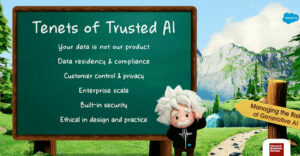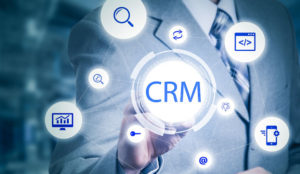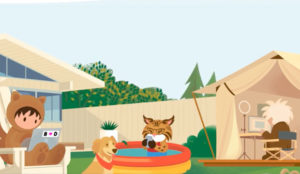
While we’re on the subject of the customer relationship, it’s important, even vital, that we do a better job of teasing apart customer types. It seems to me that the vast conversation about social CRM and the social customer has focused on the end consumer — the business-to-consumer (B2C) relationship — not the business-to-business (B2B) one. That’s probably a smart over-reaction to the fact the about two-thirds of the economy consists of B2C transactions.
What might not be smart is assuming that the other third of the economy operates more or less like the consumer economy and that B2B customers are the same and can be addressed with the same tools and methods. The most popular business organization model is still some form of hierarchy, and businesses often make decisions based on the consensus of people up the ladder. Other people have input in the decision, but very often, final approval comes from people higher up who have budget responsibilities.
Businesses spend money for only two reasons: to make money or to save it. If a purchase, and the ongoing cost of repair, maintenance and upgrade, cannot be justified on these grounds, or if the purchase cannot flat-out make more money than it costs, there is no reason for it. This reality puts a box around most B2B relationships, which prevents them from becoming emotional in a B2C sense. It also lets a business relationship operate more along operational lines where objective measures like price, on-time performance and quality standards dictate the health of the relationship.
What’s the Dif?
Over the years, vendors have had varying degrees of difficulty dealing with the differences, since they are often in B2B relationships with suppliers as well as B2C relationships with consumers.
There’s more room for bruised egos in a business-to-consumer (B2C) relationship than in a B2B one. A consumer can take offense at a vendor’s behavior, while in a similar B2B situation a behavior might be shrugged of as “just doing business.”
With all that said, it ought to be easier to produce B2B CRM systems focused on operational standards, yet deployment of good operational CRM systems seems to lag right now. Exceptions show up in customer service in companies like RightNow (kudos for the Magic Quadrant), Salesforce and others dedicated to building knowledge bases that are accessible and searchable from multiple channels.
In the best examples of B2B service, vendors are using social technologies to capture customer needs and collective solutions and then make them useful and available to others. This neat trick enables vendors to actually capture intellectual property (IP) from normal conversations. The IP is recycled through the cloud support infrastructure, resulting in lower service costs and, presumably, customers that are happier because their issues are quickly resolved.
Salesforce, with its Sales Cloud, also applies social ideas to B2B selling with positive results. Here the company gathers social IP from all sales encounters and distills common ideas from numerous encounters that can be applied in the future.
Do the Evolution
What’s most interesting to me is the evolving realization that social ideas apply equally well to both kinds of relationships but in opposite directions. The B2C approach is to socialize the relationship with the customer by gathering data from the market and analyzing it for common trends. Understanding customer trends enables B2C vendors to extract information they can apply in future encounters. Sales Playbooks, a term popularized by Kadient and some others, are the distillation of customer reactions to vendor sales initiatives and materials. From a playbook a vendor can plot a sales strategy with confidence of being on the right track.
In comparison, B2B vendors are beginning to socialize the organizational, e.g. operational, response to the customer. Chatter, another Salesforce invention, socializes the vendor organization. In a B2B situation, a vendor organization knows that operational excellence is critical to most relationships. Socializing the customer relationship from within the vendor organization simply provides the necessary and immediate stimuli for personnel to take appropriate actions.
That may sound like a mouthful, and it is, but the net of all this is an easier take-away. The B2C and B2B relationships are fundamentally different and lately, we’ve given a lot of attention to the former and maybe not enough to the latter. The social approaches to each are diametrical opposites but once we get our heads around that essential idea, I think we’ll be more successful in the B2B world.
Finally, who drives the relationship — B2C or B2B? I think it’s a smart vendor who enables the customer to believe he or she is in the driver’s seat.
Denis Pombriant is the managing principal of the Beagle Research Group, a CRM market research firm and consultancy. Pombriant’s research concentrates on evolving product ideas and emerging companies in the sales, marketing and call center disciplines. His research is freely distributed through a blog and Web site. He is working on a book and can be reached at [email protected].

























































Clearly I’m in agreement that there is a difference between B2B and B2C. Both the contractual engagement with a legal entity versus a person as well as the degree of emotions in a purchase are very different.
But putting it to such an extreme provoked my to think.
Whenever I use a B2B example in the context of social media I hear "well sure for B2B – but that is different in B2C" and the other way around. It reminds me to business trips to Switzerland. People telling me doing business in Switzerland is very different. When I moved to Silicon Valley 10 years ago, I had a lot of helping friends explaining me the difference how things get done in Silicon Vally. One of my friends is in the agricultural equipment business telling me the difference between the people in "high tech land" versus farmers from Idaho. I’ve met some of those farmers and learned how they run their business – don’t make a mistake these guys are as savvy as many of the valley guys and also no different from my friends in Switzerland.
I remember hiring a B2B sales guy 15 years ago who actually sold a copy machine to us. Here is what intrigued me with him:
While he was waiting for me (I saw him from my office) he spoke with the receptionist, then walked over to the copy machine and talked to people who made some copies. Why? Wasn’t I the "decision maker" and "economic buyer"? And why waste your time with the "consumer"?
He understood that whether I like or not so much like his offer, I base my decision on what my team really needs to do the job. So the "consumer" was equally important to Stephen than me, the "decision maker". He knew how to fuse consumer interaction and conversations with decision makers. And whether it is a copy machine, computers, a new ERP system, a new crane… B2B has a huge aspect of B2C – only most forgot about it.
IMHO the relentless focus on efficiency, low touch sales model, sales force automation and business process optimization ended up making B2B an isolated case but I honestly question the result of that development.
Maybe one reason why Social CRM is such a sought after concept because our instinct is telling us we ruined too much of the business relationships with robotic processes and inability to freely communicate with who is our most strategic connection – our market.
Axel
http://xeesm.com/AxelS
(my social map)